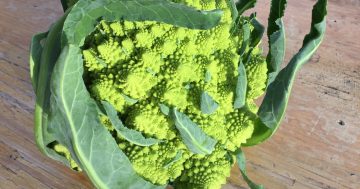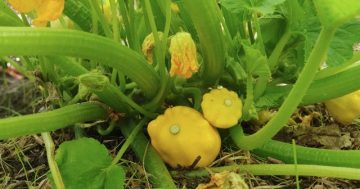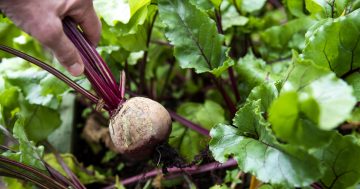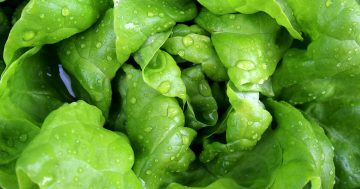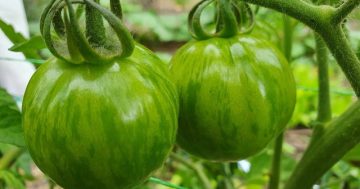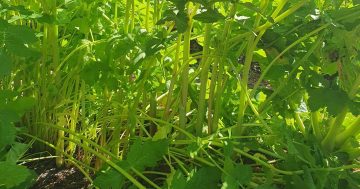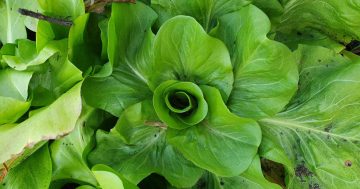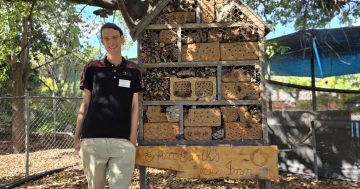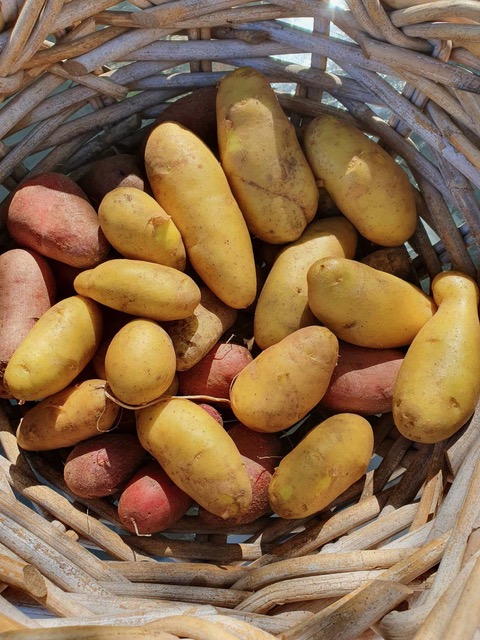
Potato harvests have been patchy during this cool summer. Photo: Helen Lynch.
So far it’s been a beautiful autumn – this March was among the top three warmest on record. Although we’ve started to have some chilly days, the Bureau of Meteorology says high maximum and minimum temperatures will continue through April.
This is good news for our kitchen garden: frosts are likely delayed and planting can continue.
Warm soil means it’s a great time to plant carrots, parsnips, turnips, radish and swede. Root crops need to be planted as seed and don’t transplant well.
Recently, retail nurseries have sold root vegetables as seedlings – a waste of money, as they develop a long single tap root. Any damage to this from stunting in a seedling tray or attempting to transplant results in poor fruit production or total failure.
Plant root vegetable seeds in main growing beds now and seed germination should be very good. Beetroot is the only root vegetable that can be planted successfully as a seedling.
Plenty of seedlings can go in the ground now and the continuing warm weather will give them a good strong start before winter hits, ready for harvest through winter into early spring.
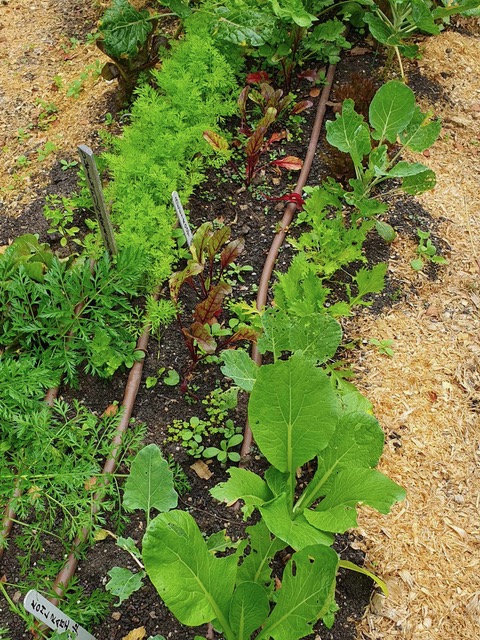
Brassica seedlings planted now will thrive through winter. Photo: Helen Lynch.
We are currently planting lots of the Brassica family particularly cauliflower, cabbage, broccoli/broccolini, kohl rabi and kale along with silverbeet, chard, spinach, and Asian greens, so we will have lots of leafy green vegetables over winter.
Browning leaves are falling in earnest as the weather cools (remember they make great compost or mulch) and we’re still enjoying the last summer vegetables. The tomato ripening has slowed right down.
Tomatoes with a blush of colour can ripen in a sunny window sill, but we’ll remove the plants shortly to hang upside down in our back room, a nice little heat trap. This allows remaining tomatoes to ripen and frees up garden space.
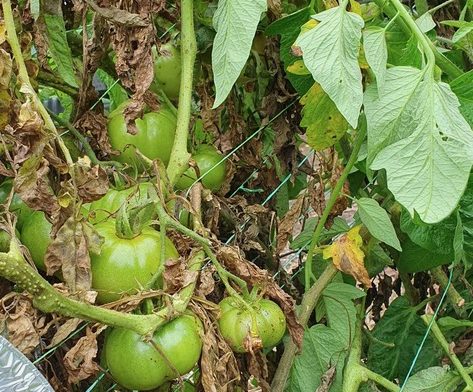
Tomatoes can be picked now and will continue to ripen inside. Photo: Helen Lynch.
Pumpkins also need to be kept on the vine for as long as possible to fully ripen. Harvest prior to the first frost. Pumpkins will continue to ripen if stored in a nice warm location, a hot house or sunroom.
Early January bush beans and scallopini squash planting resulted in a good autumn crop. Bush beans mature in a single flush more quickly than climbing beans so we have fresh beans to eat but plenty for the freezer.
The potato harvest has been uneven this season. Ruby lou, a Victorian cultivar with red skin and creamy white flesh, has done well but Pink Fir Apples have not.
Earlier spring plantings have done better than later ones, unexpectedly in our cool climate.
Many cool/cold climate gardeners will have chillies finally maturing. They haven’t been prolific here but there are enough for a batch of chilli jam from the jalapenos along with common long green and red varieties.
It’s more usual to cultivate red chillies for preserves and condiments because they look prettier (green chilli turns a muddy colour after cooking). However chilli jam with mixed coloured chilli varieties is a delight for lovers of sweet, hot flavour combinations. Using homegrown, pesticide-free, chillies for jam, and a good recipe, ensures success.
Hot peppers are among the “dirty dozen” of most pesticide-contaminated vegetables, so your chilli jam will win praise for its purity.
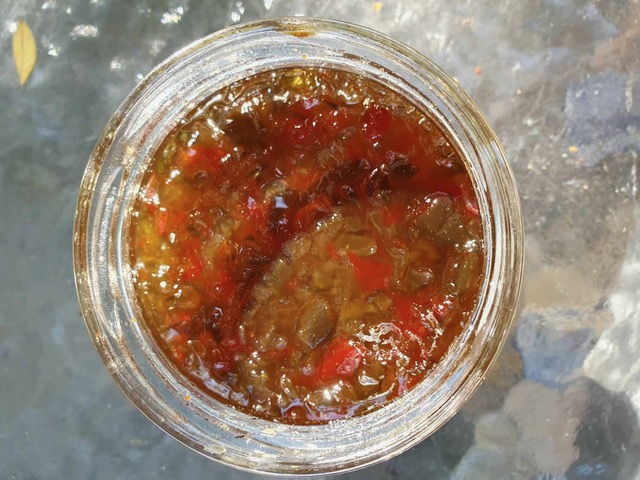
Fresh chilli jam is a delicious product from the summer vegetable garden. Photo: Helen Lynch.
The sweet corn is over. We will probably barbecue the last few cobs. Stalks were very tall this year, nearly two metres. We’ll put them through the chipper before composting and follow up with a broad bean sowing.
Broad beans are a great winter garden crop. They are nitrogen fixers; they grow well through the frost season; they’re a dense cover crop for protecting the soil through winter and in spring you get a crop of delicious beans.
Although the weather will be warmer than usual, it’s a good idea to consider frost protection. Many vegetables are frost hardy, but benefit from growing under a cloche frame with frost protection fabric.
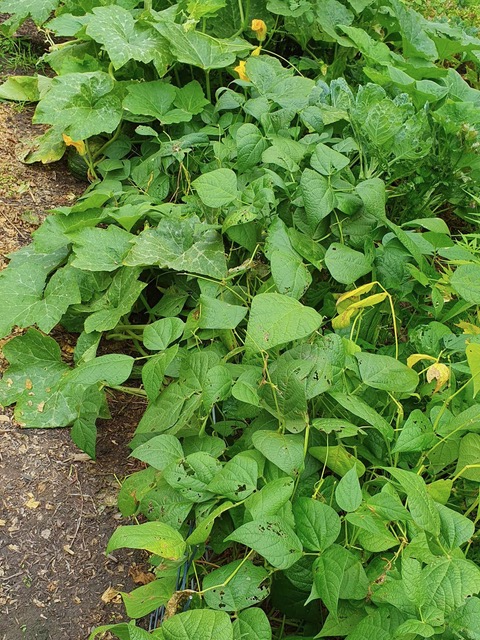
A flush of green beans creates a harvest for the freezer. Photo: Helen Lynch.
Leafy green vegetables – Asian greens, lettuces and spinach – generally survive in the open during winter but frost protection helps leaves stay tender. Fabrics increase the temperature a few degrees, just enough to bolster growth.
While a few frosts over the plant growing period will inflict some damage, most plants recover quickly. However, repeated frosts will do damage as water is drawn into intercell spaces to freeze and expand. This dehydration produces tough leaves.
Keeping your vegetables well hydrated with a regular feed of a liquid seaweed product can help them tolerate frosts better.
Leeks are also great to be planting now. An autumn onion planting will experience heavy frosts followed by a warm spring, resulting in poor bulb formation. Leeks are the best allium to plant for a winter onion flavour.
Don’t forget it’s also time to plant garlic.
The best gardening tip we have for you is keep planting while the soil is still warm and protect your young plants as we travel through autumn into winter.
Original Article published by Helen Lynch on Riotact.







